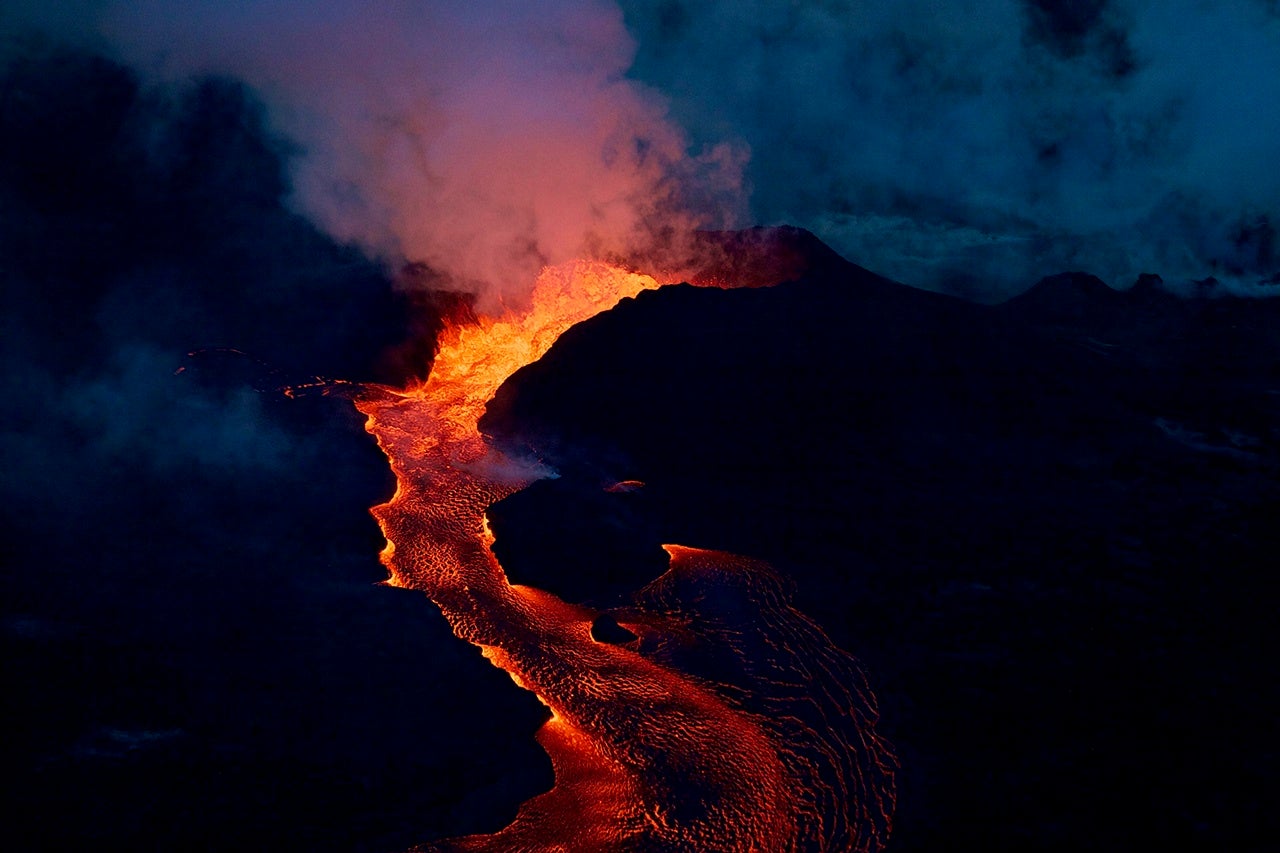With two volcanoes – La Palma in the Canary Islands off the coast of North Africa and Kilauea on the Big Island of Hawaii – erupting simultaneously and garnering a lot of news attention, it might seem like the world is burning to the ground, literally. But don’t worry, it’s not – at least not geologically.
In fact, there are actually dozens of active volcanoes around the world with the U.S. ranking third in the number of historically active ones, behind Indonesia and Japan. The College Today asked College of Charleston geologist Cassandra Runyon, who did field work at Kilauea while earning her doctorate at the University of Hawaii, to clear the smoke for us about all this volcanic activity.
It seems like there’s a lot of volcanic activity of late. Should we be concerned?
No, not unless one has property in the vicinity. Both of these volcanoes have a history of flowing into neighborhoods and communities that were developed in the quiet times between eruptions.
Why are people so intrigued by volcanoes?
In addition to their majestic landforms, they provide insight into the power of mother nature and one of the processes that formed the Earth.
Anything in particular that interests you either about La Palma or Kilauea?
They are both spectacular volcanoes capable of producing some exciting pyroclastic plumes and extensive lava flows. Lava flows formed by Pu’u O’o, one of the more recent vents on Kilauea, reached the ocean and helped to add more real estate to the Big Island! Additionally, the lava tubes formed by these types of volcanoes are similar to lava tubes identified on the Moon.
Are La Palma and Kilauea connected in any way? Did La Palma trigger Kilauea?
No, they are not connected. One is erupting in the eastern Atlantic Ocean, the other in the central Pacific Ocean.
What’s the difference and/or similarities between the two?
Both are shield volcanoes erupting basaltic lavas. These types of volcanoes form “layers” and “layers” of fluid lava that erupts at a high temperature, permitting the lava to flow faster and more easily than the explosive eruption that formed Mt. St. Helens and the rest of the Cascade volcanoes. Picture chocolate syrup flowing versus chocolate pudding or frosting.
What are some of the benefits of learning about volcanoes?
Studying volcanoes like these and those in Iceland help us to plan for future missions to the Moon and Mars and for potentially using one of the lava tubes as a shelter for the astronauts. Not only can they provide an ambient temperature, but they can also be a natural shield from smaller micrometeorites.
Are scientists able to predict eruptions?
Earthquake activity tends to pick up prior to an eruption as magma is moving around, but that does not always lead to an eruption. Similarly, ground tilt may also increase as magma moves closer to the surface, but that also does not always lead to an eruption. Both Kilauea and La Palma are active volcanoes so it is not surprising that they erupted. Volcanologists use a color scale much like the TSA threat conditions to indicate changes and raise awareness. Since its last eruption in 2018, Kilauea’s watch color or threat levels have changed from green to yellow, orange and red (eruption).





